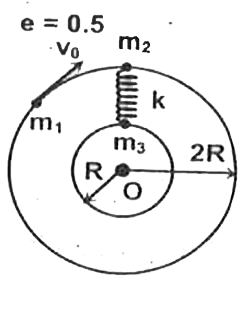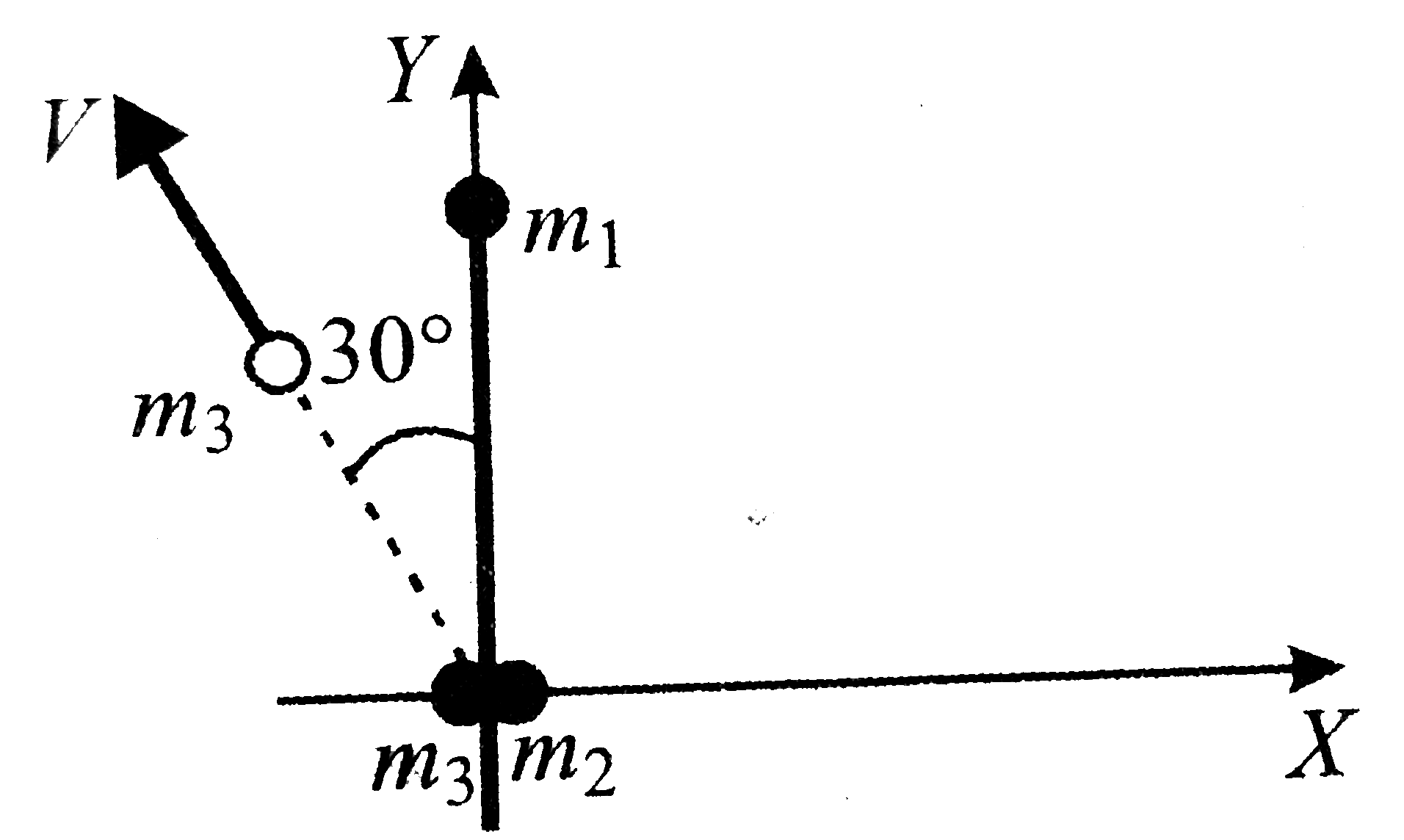Mass hits with inelastic impact (e=0) while slliding horizontally with velocity v along the common line of centres of three equal mass as shoun in fugure Initially, masses and are stationary and the spring is unstressed. Find:

The correct Answer is:
Step by step video & image solution for Mass m_(1) hits m_(2) with inelastic impact (e=0) while slliding horizontally with velocity v along the common line of centres of three equal mass as shoun in fugure -4.155. Initially, masses m_(2) and m_(3) are stationary and the spring is unstressed. Find: by Physics experts to help you in doubts & scoring excellent marks in Class 12 exams.
Updated on:21/07/2023Topper's Solved these Questions
- CENTRE OF MASSBOOK - MOTIONCHAPTER - CENTRE OF MASSEXERCISE - Exercise - 4 Level-I
18 Videos
- CENTRE OF MASSBOOK - MOTIONCHAPTER - CENTRE OF MASSEXERCISE - Exercise - 4 Level-II
20 Videos
- CENTRE OF MASSBOOK - MOTIONCHAPTER - CENTRE OF MASSEXERCISE - Exercise - 3 Level-I
34 Videos
- Capacitance BOOK - MOTIONCHAPTER - Capacitance EXERCISE - EXERCISE -4 LEVEL II
19 Videos
- CIRCULAR MOTIONBOOK - MOTIONCHAPTER - CIRCULAR MOTIONEXERCISE - EXERCISE - 4
16 Videos
Similar Questions
Mass m1 hits & sticks with m2 while sliding horizontally with velocity v along the common line of centres of the three equal masses (m1=m2=m3=m). Initially masses m2 and m3 are stationary and the spring is unstretched. Find
(a) the velocities of m1,m2 and m3 immediately after impact.
(b) the maximum kinetic energy of m3.
(c) the minimum kinetic energy of m2.
(d) the maximum compression of the spring.

View SolutionTwo masses, m1 and m2 , are moving with velocities v1 and v2. Find their total kinetic energy in the reference frame of centre of mass.
View Solution
Knowledge Check
Three particles each of mass 'm' can slide on fixed frictionless circular track in the same horizontal plane as shown in the figure. Particle m1 moves with velocity v0 and hits particle m2, the coefficient of restitution being θ=1/2. AsSigmae m2 and m3 are initially in rest and lie along a radial line before impact and the spring is initially Unstretched. Then,

The velocity of m3 when extension in the spring is maximumA110v0B310v0C710v0Dnone of theseThere particles each of mass m can slide on fixed frictioless circular tracks in the same horizontal plane as shown. Particle m1(=m) moves with velocity v0 and hits particle m2(=m), the cofficient of restitution being e=0.5 . Assume that m2 and m3(=m) are at rest initially and lie along a radial line before impact, and the spring is initially unstretched.

Velocity of m2 immediately after impact isAv04B3v04Cv02D3v02Three point like equal masses m1,m2 and m3 are connected to the ends of a massless rod of length L which lies at rest on a smooth horizontal plane. At t=0, an explosion occurs between m2 and m3, and as a result, mass m3 is detached from the rod, and moves with a known velocity v at an angle of 30∘ with the y-axis. Assume that the masses m2 and m3 are unchanged during the explosion. What is the velocity of the centre of mass of the system consisting of three masses, after the expulsion?
 Av4(ˆi−3ˆj)Bv4(−ˆi+√ˆj)C−vDnone of these
Av4(ˆi−3ˆj)Bv4(−ˆi+√ˆj)C−vDnone of these
A particle of mass 2m moving with velocity v strikes a stationary particle of mass 3m and sticks to it. The speed of the system will be
View SolutionIn a double star, two stars one of mass m1 and another of mass m2, with a separation d, rotate about their common centre of mass. Find
(a) an expression for their time period of revolution.
(b) the ratio of their kinetic energies.
(c) the ratio of their angular momenta about the centre of mass.
(d) the total angular momentum of the system.
(e) the kinetic energy of the system.
View SolutionTwo blocks M1 and M2 having equal mass are free to move on a horizontal frictionless surface. M2 is attached to a massless spring as shown in figure. Initially M2 is at rest and M1 is moving toward M2 with speed υ and collides head-on with M2.

View SolutionA particle of mass m moving with velocity v strikes a stationary particle of mass 2m and sticks to it. The speed of the system will be.
View SolutionA particle of mass 2m moving with velocity v strikes a stationary particle of mass 3m and sticks to it . The speed of the system will be
View Solution
